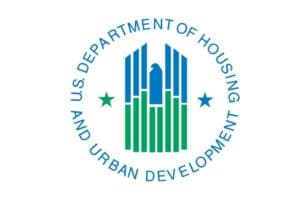NCHMA

Indiana Halts Field Work for Market Analysis and Capital Needs Assessments During COVID-19; Virtual Work Can Continue
The Indiana Housing and Community Development Authority (IHCDA) instructed all market analysts, capital needs assessors and appraisers performing work for developments funded by IHCDA or applying for funding through IHCDA to cease site visits, fieldwork and onsite inspections until further notice.

Minnesota Alters Market Study Guidelines
Market study analysts may encounter hindrances to completing work, particularly related to field work and accessing market information. If circumstances restrict analysts’ ability to complete a market study, Minnesota Housing suggests the following alternatives for information-gathering:

COVID-19’s Impact on Field Work for Market Studies
The Executive Committee of the National Council of Housing Market Analysts developed a memo on COVID-19’s Impact on Field Work for Market Studies, given the challenges of completing real estate analysis including site inspections during the current environment with office closures and travel restrictions.

AHIC Updates LIHTC Underwriting Guidelines
The Affordable Housing Investors Council (AHIC) has published updated Underwriting Guidelines for its members. The Guidelines are designed to be used as an outline for an underwriting process and for investment documents for proprietary, multi-investor, and direct investments in low-income housing tax credits (LIHTC). They examine how to analyze the financial strength and expertise of […]

GAO Publishes Long Awaited LIHTC Cost Report
On September 18, the U.S. Government Accountability Office (GAO) published a new report “LOW-INCOME HOUSING TAX CREDIT: Improved Data and Oversight Would Strengthen Cost Assessment and Fraud Risk Management.”

FHA Updates Multifamily Accelerated Processing Guide
The new MAP Guide delegates more underwriting responsibility to approved “MAP lenders” and includes all relevant guidance published by FHA since the MAP Guide was last updated in 2011.

Scope of Work and Reporting Standards
The National Council of Affordable Housing Market Analysts’ (NCAHMA) has adopted a series of documents, including three cornerstone documents: the Model Content Standards for Market Studies for Rental Housing , the Market Study Index, and the Code of Ethics and Standards of Professional Practice. These fundamental and comprehensive documents are supplemented by several White Papers and […]

Recommended Practices for Determining Demand
The National Council of Housing Market Analysts (NCHMA) has separate definitions of overall market demand and project specific demand Market demand is the total number of households in a defined market area that would potentially move into any new or renovated housing units. Market demand is not project specific and covers all renter households and income levels. Components of demand vary and can include household growth; turnover, substandard dwelling units, rent over-burdened households, and demolished housing units.

Best Practices For Rural Market Studies (DRAFT)
Several important differences between rural and urban market studies include market area definitions, evaluation of comparables, and consideration of demand. On the surface, it seems like defining a rural market area might be purely a matter of opinion, but well-established analytic tools are available to assist market analysts. Evaluating comparables, understanding how the proposal would fit into the market, and understanding what the demand calculations really mean are more a matter of experience.

White Paper: Determining Market Area
The definition of a market area sets the context and tone of the entire market study. While a somewhat subjective judgment, a market area’s size and density has a profound impact on an analysis in terms of understanding demographic trends, demand estimates and the competitive environment.

Selecting Comparable Properties
Comparable properties are used for several purposes within a market study. They are used to help evaluate the market, they are used to evaluate the subject’s position within a market, and they are used to determine market rents. The more similar the comparable properties are to the proposed property, the more reliable the conclusions that may be drawn. The purpose of this paper is to investigate the concepts involved in selecting comparable properties, and to identify some of the ways comparable properties are used in a study.

Calculating Market Rent
A market analysis for income properties, that is that includes rental units, requires an estimate of market rent. Depending on the purpose of the study, it could be an average market rent for all units in a defined market area, a weighted average market rent for all units, or for various unit types, ie., studios, one or two bedrooms, etc.